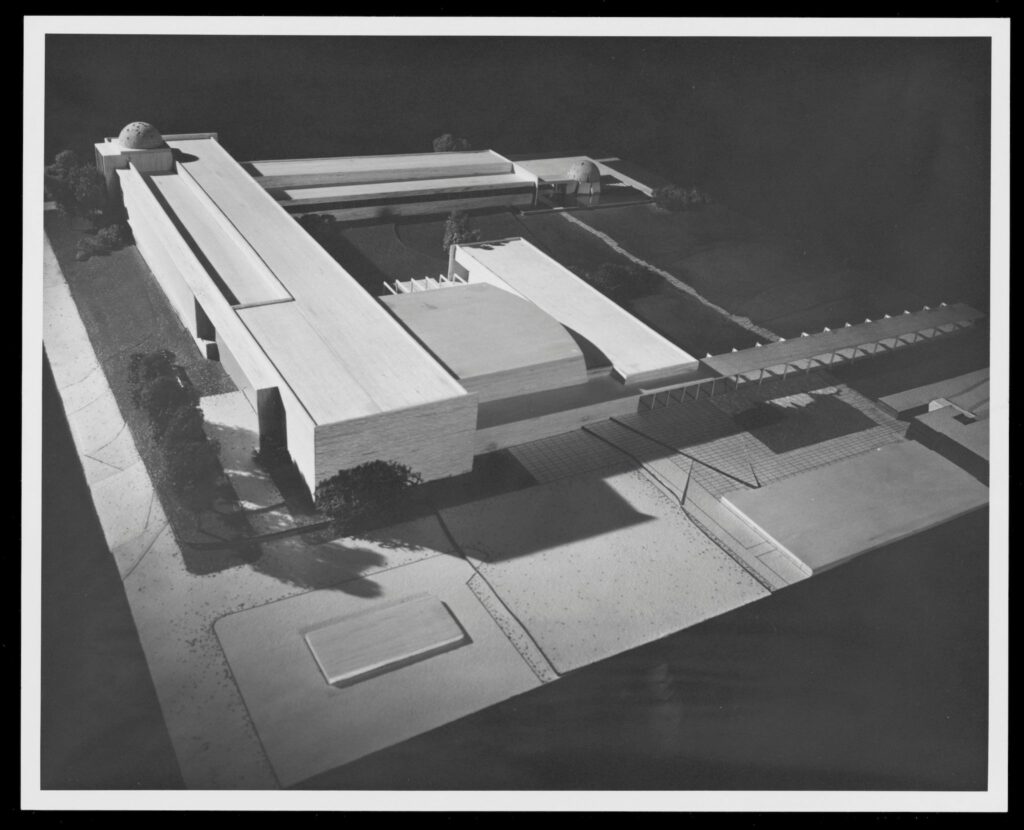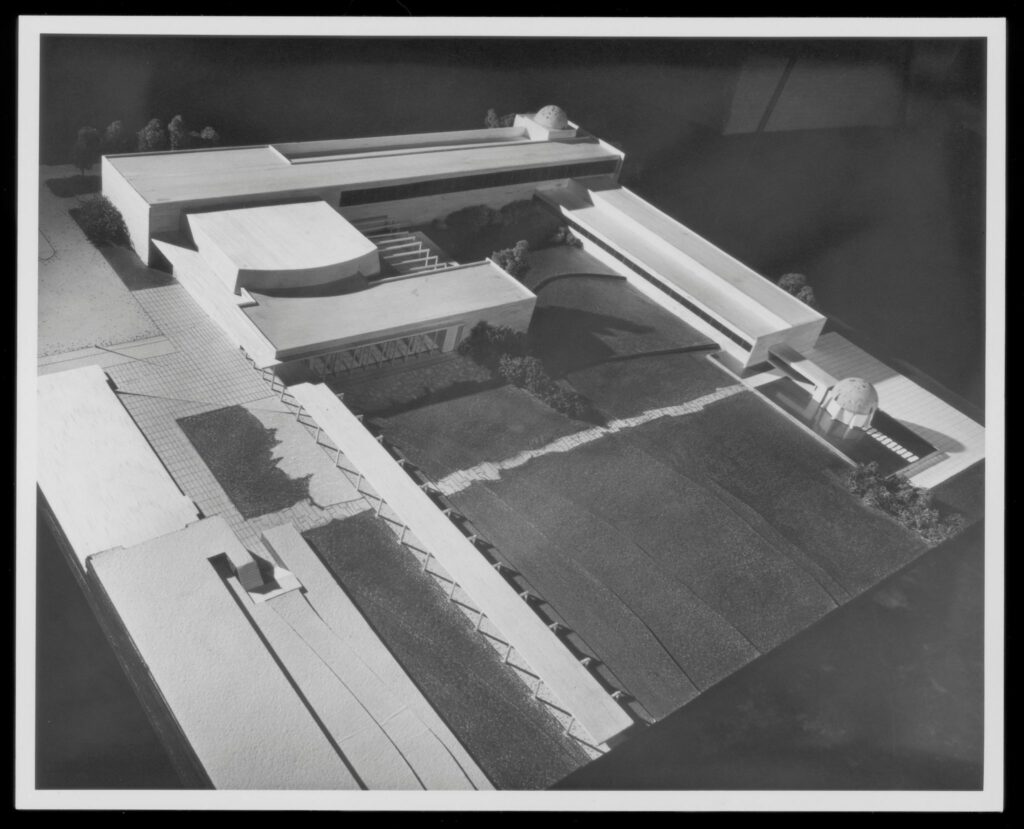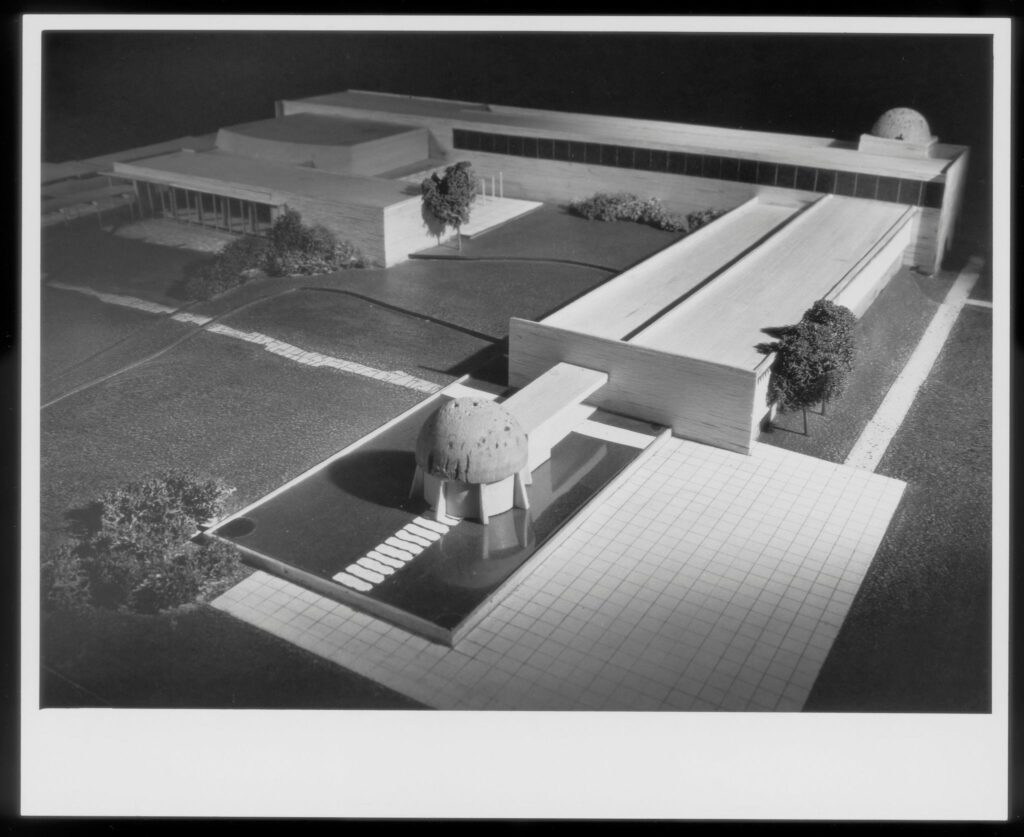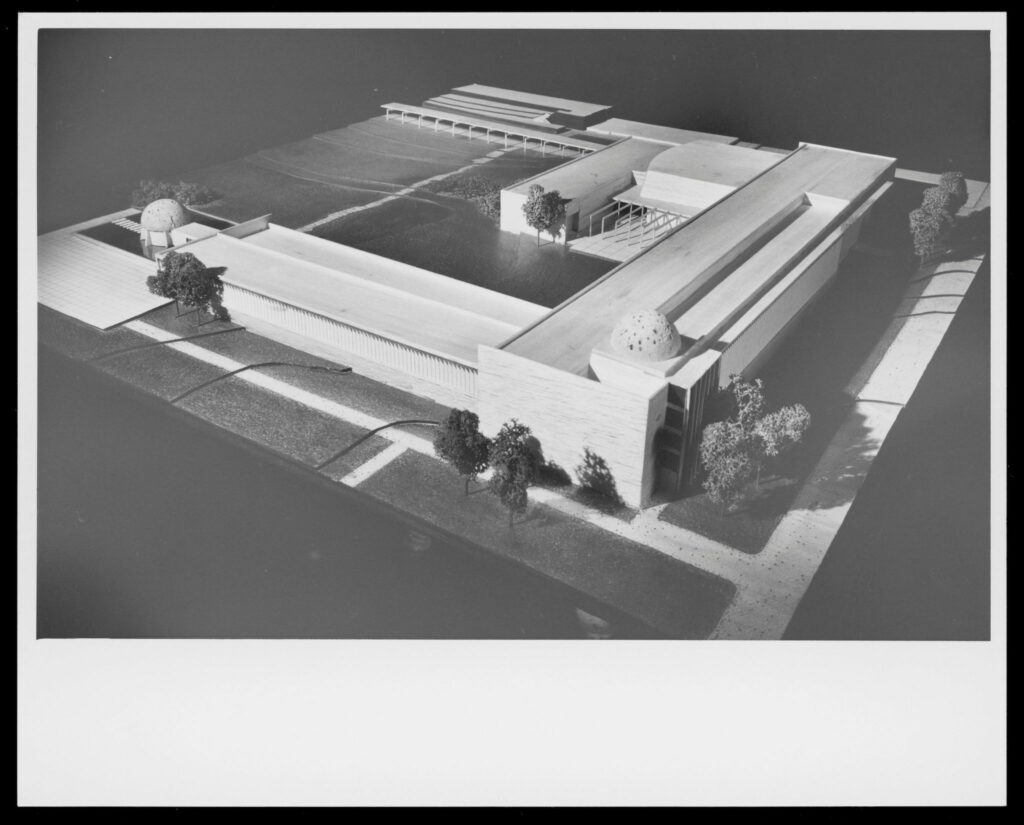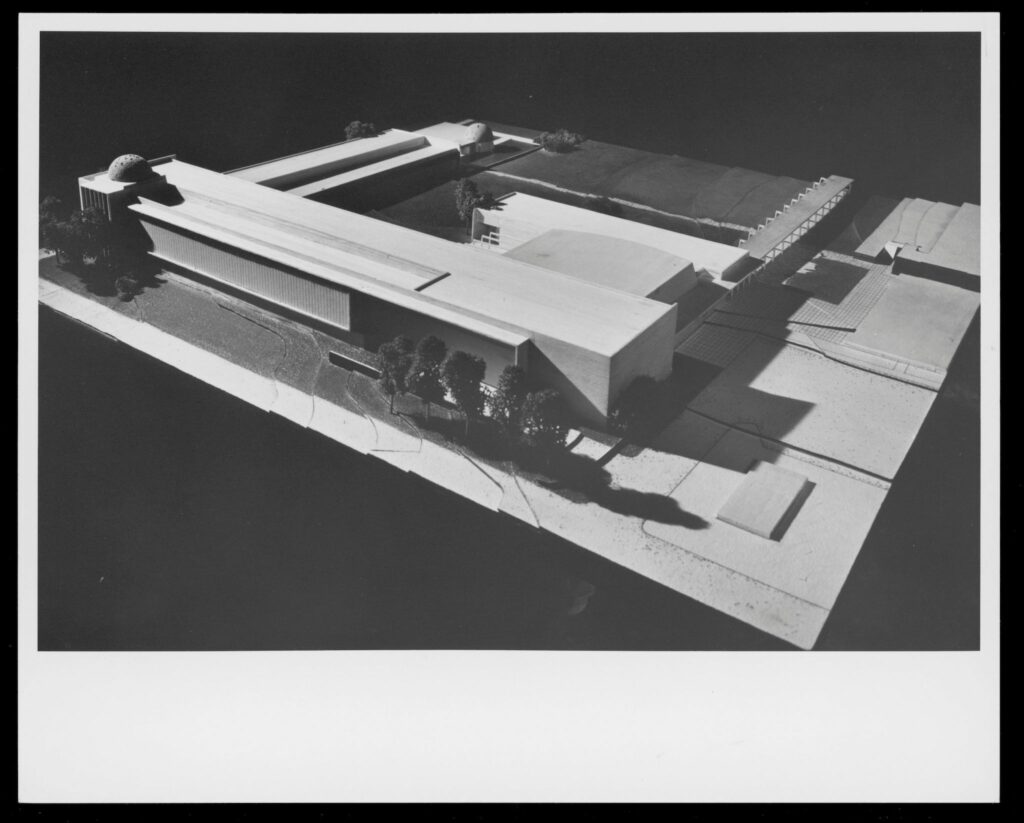Saint John’s College Art and Science Building

Saint John’s College Art and Science Building
After Richard Neutra’s lecture at Saint John’s College was positively received, the Neutra and Alexander firm was selected to design the college’s Arts and Sciences Building, using their modernist architectural aesthetic. At the same time, the newer design had to interact with the campus’s older structures, including red-brick, hipped-roof, colonial era-buildings; founded in 1696, the college was one of the oldest educational institutions in the United States. While Neutra and Alexander employed their more typical materials of steel, glass, concrete, and aluminum louvers, the red brick and emphasis on the horizontal naturalized the construction. In addition, the architects were tasked with visualizing connections between different academic disciplines, shaping a community rather than furthering scholarly isolation. Neutra and Alexander drew upon classical traditions, setting a U-shaped group of buildings around an agora or open public space. Landscaping, breezeways, and walkways were modeled after the Aristotelian teaching methods used at the Stoa Poikile or Painted Porch, where ambulatory movement was believed to simulate thoughts and conversation. Inside, a discussion hall for “Socratic Dialectics” as well as an auditorium were intended to bring people from different fields together, and special attention was paid to the acoustic design of these spaces. For example, zigzagging walnut partitions aided multi-directional acoustics in the auditorium. Classrooms for distinct disciplines—such as chemistry and music—were not located far apart from one another, offering additional opportunities for crossover. These intersections are symbolically realized in the building’s design, as planes overlap and intersect. Elsewhere, Neutra and Alexander continued to demonstrate an attention to detail. Classrooms’ illumination balanced daylight with artificial light and wall colors were carefully considered. The library’s façade was transformed by a staircase that ran across it, which, when illuminated at night, glowed through translucent glass panels like a beacon. Even the loading dock had a carefully designed façade, including a pair of metal doors faced with corrugated sheet metal which were framed to step out from the building the dock was attached to.
Adapted from Neutra – Complete Works by Barbara Lamprecht (Taschen, 2000), p. 348.
Project Detail
Year Built
1958
Project Architect
Neutra u0026 Alexander with Cochran, Stephenson and Wing
Client
Saint John’s College
Location
Annapolis, MD
